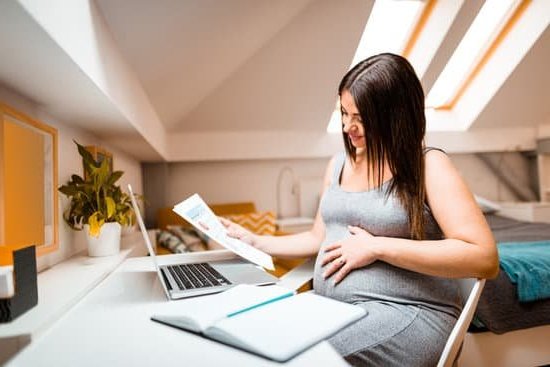Pregnancy is a time of great joy and anticipation, but it can also bring about various physical discomforts, including back pain. Many women wonder when does back pain start in pregnancy as they experience the changes that come with carrying a child. Understanding the causes and potential solutions to this common ailment can make the journey to motherhood more comfortable and enjoyable.
During pregnancy, the body undergoes significant changes to accommodate the growing fetus, leading to an increased strain on the spine and pelvis. Hormonal shifts, weight gain, and changes in posture all contribute to the development of back pain during pregnancy. It is essential for expectant mothers to be knowledgeable about these factors so that they can take proactive measures to alleviate and prevent discomfort.
In this article, we will explore the anatomy of the spine and pelvis during pregnancy, shedding light on how these changes can lead to back pain. We will also delve into the impact of hormonal changes on musculoskeletal health and discuss how weight gain and shifts in posture play a role in causing discomfort.
Additionally, we will provide tips for preventing and managing pregnancy-related back pain, as well as exercises and stretches that can help relieve symptoms. Lastly, we will highlight when it is necessary to seek medical attention for pregnancy back pain, ensuring that mothers-to-be have a comprehensive understanding of their options for care.
Understanding the Anatomy of the Spine and Pelvis During Pregnancy
During pregnancy, the body undergoes various changes to accommodate the growing baby, which can contribute to back pain. Understanding the anatomy of the spine and pelvis during pregnancy is crucial in identifying the causes and potential solutions for this discomfort.
The spine consists of vertebrae, discs, ligaments, and muscles that work together to provide support and flexibility. As the uterus expands during pregnancy, it shifts the center of gravity forward, causing increased curvature in the lower back. This shift can put strain on the muscles and ligaments of the lower back and pelvis, leading to discomfort and pain.
The pelvis also plays a significant role in supporting the growing uterus and fetus. The hormone relaxin softens the ligaments in the pelvic area to allow for easier passage of the baby during childbirth. However, this increased flexibility can also lead to instability in the pelvic joints, contributing to back pain. Additionally, as the baby grows, it can put pressure on nerves and blood vessels in the pelvic region, further exacerbating discomfort.
Understanding these changes in anatomy is essential for pregnant women to work with their healthcare providers to find appropriate solutions for managing back pain during this time. It can also help women make informed decisions about exercises and postures that may alleviate some of their discomfort.
- Changes in spine curvature due to uterine growth
- Softening of pelvic ligaments due to hormone relaxin
- Increased pressure on nerves and blood vessels from growing uterus
Hormonal Changes and Their Impact on Back Pain
During pregnancy, the body goes through numerous hormonal changes that can have a significant impact on back pain. These hormonal changes can contribute to the discomfort and pain experienced by expectant mothers. Understanding how these hormonal shifts affect the body can help women better manage and prevent pregnancy-related back pain.
Here are some key points to consider about hormonal changes and their impact on back pain during pregnancy:
- Relaxin: One of the primary hormones responsible for altering the body during pregnancy is relaxin. This hormone helps to relax the ligaments in the pelvic area in preparation for childbirth. However, it can also loosen ligaments throughout the body, including those in the spine, which can lead to instability and increased risk of back pain.
- Progesterone: Another hormone that increases during pregnancy is progesterone. This hormone helps to soften and stretch ligaments and muscles in preparation for childbirth. However, it can also cause muscles to become more relaxed and less supportive, potentially contributing to back pain.
- Increased stress on the spine: As the baby grows, additional weight is placed on the spine, leading to increased stress and strain. This added pressure, combined with hormonal changes that affect stability and support, can lead to discomfort and pain in the back.
It’s important for expectant mothers to be aware of these hormonal changes and their potential impact on back pain. By understanding how these shifts influence their bodies, women can take proactive steps to prevent or alleviate pregnancy-related back pain. This may include practicing good posture, engaging in regular exercise, and seeking proper medical guidance when necessary.
Weight Gain and Posture Shifts in Pregnancy
During pregnancy, a woman’s body goes through significant changes, including weight gain and shifts in posture that can contribute to back pain. Weight gain during pregnancy is natural and necessary for the healthy development of the baby, but it can also put extra stress on the spine and pelvis, leading to discomfort and pain. Additionally, as the baby grows, the mother’s center of gravity shifts forward, causing changes in posture that can strain the back and pelvis.
On average, women are advised to gain between 25-35 pounds during pregnancy, with underweight women recommended to gain more and overweight women recommended to gain less. This extra weight puts added pressure on the spine, especially in the lower back region. As a result, many women experience lower back pain as their pregnancy progresses. In fact, studies have shown that approximately 50-70% of pregnant women experience back pain at some point during their pregnancy.
In addition to weight gain, changes in posture also play a significant role in causing back pain during pregnancy. As the uterus expands to accommodate the growing baby, it can cause an increased curvature of the spine or swayback posture.
This shift in posture puts strain on the muscles and ligaments of the lower back and pelvis, contributing to discomfort and pain. Therefore, it’s important for pregnant women to be mindful of their posture and make conscious efforts to maintain proper alignment to help prevent or alleviate back pain.
| Impact Factor | Percentage |
|---|---|
| Percentage of pregnant women experiencing back pain | 50-70% |
| Average weight gain during pregnancy | 25-35 pounds |
Types of Back Pain Experienced in Pregnancy
During pregnancy, many women experience back pain due to the various changes happening in their bodies. This section will discuss the different types of back pain that pregnant women may experience and how these can impact daily life.
Sacroiliac Joint Pain
One common type of back pain experienced during pregnancy is sacroiliac joint pain. This type of pain is often felt in the lower back and buttocks, and can sometimes radiate down the legs. The sacroiliac joints are located at the base of the spine, and during pregnancy, they can become inflamed or irritated due to hormonal changes and increased pressure from the growing uterus.
Sciatica
Another type of back pain that some pregnant women experience is sciatica. This type of pain occurs when the sciatic nerve, which runs from the lower back down the legs, becomes compressed or irritated. This can result in sharp, shooting pains that extend from the lower back down to the feet. Sciatica during pregnancy is often caused by the pressure exerted by the growing baby on the pelvic region and lower spine.
Muscle Strain
Pregnant women may also experience muscle strain in their back as a result of carrying additional weight and adopting different postures to accommodate their changing bodies. This type of pain can occur in any part of the back and is often characterized by aching or stiffness. Additionally, muscle strain can result from hormonal changes that loosen ligaments and joints in preparation for childbirth, leading to instability and potential strain on muscles.
Understanding these different types of back pain can help expectant mothers identify their symptoms more accurately and seek appropriate care or treatment. It’s important for pregnant women to consult with healthcare professionals if they are experiencing severe or persistent back pain to ensure optimal health for both themselves and their babies during this crucial time.
Tips for Preventing and Managing Pregnancy Back Pain
Pregnancy back pain is a common discomfort experienced by many women, but there are strategies to help prevent and manage it. One of the most important factors in preventing back pain during pregnancy is maintaining good posture. As the body changes and the baby grows, it’s crucial to be mindful of posture when sitting, standing, and moving to alleviate strain on the back.
In addition to maintaining good posture, wearing supportive shoes can also make a difference in preventing pregnancy back pain. Flat, unsupportive footwear can put extra strain on the back, so opting for supportive shoes with cushioning and arch support is recommended for pregnant women.
Furthermore, engaging in regular exercise tailored to promote core strength and flexibility can help prevent and manage back pain during pregnancy. Prenatal yoga, swimming, or low-impact aerobics are excellent choices for expecting mothers to keep their bodies strong and flexible as they prepare for childbirth.
| Tips | Benefits |
|---|---|
| Maintaining good posture | Alleviates strain on the back |
| Wearing supportive shoes | Reduces extra strain on the back |
| Engaging in regular exercise | Promotes core strength and flexibility |
Exercises and Stretches to Relieve Back Pain
During pregnancy, back pain can be a common and uncomfortable issue for many women. Fortunately, there are exercises and stretches that can help relieve some of the discomfort associated with pregnancy back pain. It is important to consult with a healthcare provider before starting any new exercise routine during pregnancy.
Exercises
Gentle exercises such as prenatal yoga, swimming, and walking can help strengthen the muscles in the back and abdomen, which can provide support to the spine and reduce back pain. It is important to avoid high-impact activities or exercises that put strain on the back, such as heavy weightlifting or intense cardio workouts.
Stretches
Stretching is an important component of relieving back pain during pregnancy. Performing stretches that target the lower back, hips, and pelvis can help alleviate tension and improve flexibility. Some beneficial stretches include pelvic tilts, cat-cow stretches, and seated piriformis stretches.
Precautions
When incorporating exercises and stretches into a daily routine, it is crucial to listen to your body and avoid any movements that cause discomfort or pain. Additionally, it is essential to stay well-hydrated, take breaks when needed, and use proper form during exercises to prevent injury.
By engaging in regular physical activity and incorporating gentle stretches into their daily routine, expectant mothers may experience reduced back pain during pregnancy. However, if the pain persists or worsens despite these efforts, it is important to seek guidance from a healthcare professional.
When to Seek Medical Attention for Pregnancy Back Pain
In conclusion, back pain during pregnancy is a common and often uncomfortable experience for many women. It can begin as early as the first trimester and continue throughout the entire pregnancy. Understanding the physical changes that occur in the body during pregnancy, such as weight gain and hormonal fluctuations, can help expectant mothers anticipate when back pain may start and how to manage it.
It is important for pregnant women to pay attention to their bodies and seek medical attention if they experience severe or persistent back pain. While some discomfort is normal, certain symptoms such as sudden and intense pain, numbness or tingling in the legs, or difficulty walking should not be ignored. These could be signs of more serious issues such as sciatica or a herniated disc, which require prompt medical evaluation.
Overall, staying informed about the causes and types of pregnancy-related back pain, practicing good posture and body mechanics, engaging in safe exercises and stretches, and seeking professional help when necessary are all essential steps in managing back pain during pregnancy. By taking a proactive approach to their health and well-being, expectant mothers can minimize discomfort and enjoy this special time in their lives with greater ease.
Frequently Asked Questions
Is Back Pain Early Pregnancy Signs?
Back pain can be an early sign of pregnancy for some women. The increase in hormones and the changes in a woman’s body can lead to discomfort and back pain.
What Pains Are Normal in Early Pregnancy?
Mild cramping, breast tenderness, and lower back pain are normal in early pregnancy. These symptoms are often similar to premenstrual discomfort but may be more intense.
How Many Days Before Period Does Back Pain Start?
Back pain before a period can start anywhere from a few days to one week before the period begins. It varies from woman to woman and can also change from cycle to cycle.

Welcome to my fertility blog. This is a space where I will be sharing my experiences as I navigate through the world of fertility treatments, as well as provide information and resources about fertility and pregnancy.





